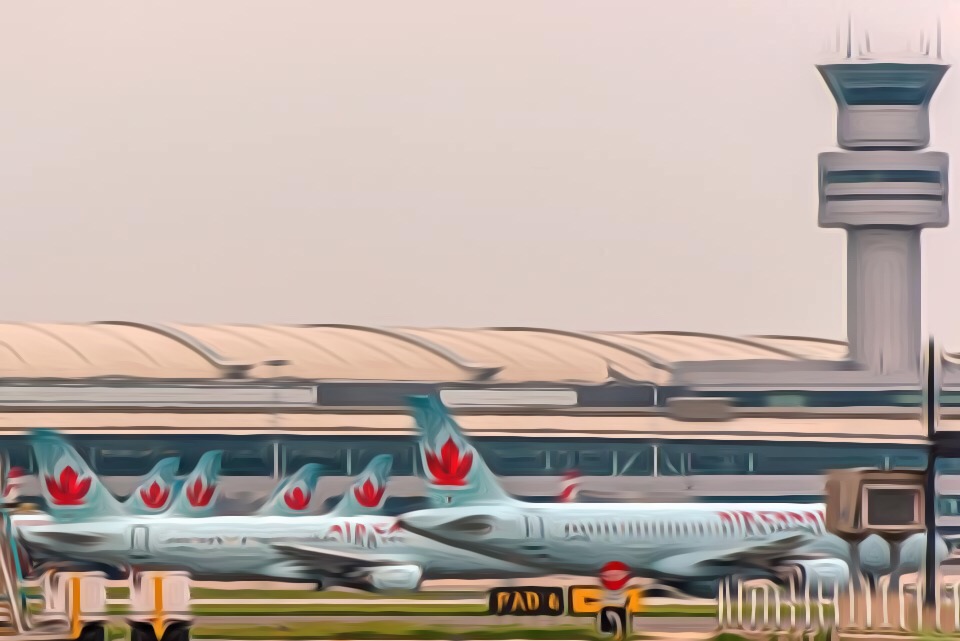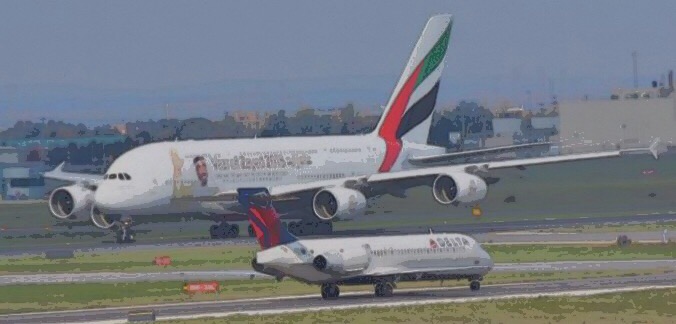Toronto has a black hole in its aviation infrastructure, it is missing the accessible jet airport infrastructure typical for a city of its size. This hole is so large that it threatens to choke the competitiveness and economic prosperity of the city and the freedom of movement of millions of its citizens.
In Toronto, and around the world, there are two future complementary visions of how passengers should be moved by aircraft. The first is the Mega Hub, an upsized version of the existing ‘Spoke and Hub’ system in use at large airports since the 1970s. The second approach is called, ‘Point-to-Point’, whereby passengers take a flight directly from an airport closer to their home, direct to a destination.

Up to now, the Mega Hub has had several advantages for an airport operator and the airlines. For the airport operator, the Mega Hub has huge financial advantages enabling the transformation of a landing strip and aircraft gas station into a retail real estate empire. This is due to the concentration of traffic flows, the need for passengers to wait between connecting flights, often for hours, and the ability to isolate passengers from the rest of a city within the tight security required for domestic and international flights. This enables the creation of a high-end, premium-priced, shopping mall-style retail environment and an associated car parking empire. Prices for parking, goods and even basic items such as a bottle of water are two or three times the cost found outside the airport. This allows for large margins on everything from food service to parking fees. It’s easy to see why the GTAA wants to continue to grow Toronto Lester B Pearson Airport into a Mega Hub.
For an airline, a Mega Hub allows for a concentration of passengers that enables higher margins by utilizing fewer, larger aircraft with higher seat utilization. The operation of larger aircraft to deliver a high seat utilization between destinations also has been historically more efficient, to a point. As congestion increases at the Mega Hub airport, operating costs can increase dramatically. This cost is in time, fuel, and green house gas emissions from excess flight delays on landing, long taxi lineups for take off, and from delays to access a gate.
Unfortunately for airport Mega Hub supporters and investors, the passengers, who are their customers, appear to universally prefer to fly directly from their home airport to their destination. This fundamental desire, backed by technology advances enhancing the profitable of what the industry calls “long thin routes” is pushing the sales of wide body large passenger jet aircraft into a state of misery.

At the same time, the demand for new technologically advanced midsize passenger jets is soaring. Airlines, especially low-cost carriers (LLC) are leveraging the efficiency and longer ranges of the new midsized jets (the 737 MAX, for example) with point-to-point operations from secondary, less congested airports. It is a paradox that is taking the industry by storm and leaving investors in other Mega Hub airports struggling to defend their investments.
LCCs can’t operate out of a major Mega Hub and still maintain low costs. They are successful when operating out of another commercial airport in the vicinity of the Mega Hub. A well-know example is Chicago’s O’Hare International Airport and nearby Midway Airport. Another example is London’s Mega Hub Heathrow Airport and nearby Stansted and Gatwick airports.
The difference for consumers can be dramatic. A simple round-trip flight from London to Hamburg, is a great example of why LLCs are taking the industry by storm. LCC Ryanair and EasyJet fares vary from $61.00 USD – $137.00 USD out of Luton, Stansted or Gatwick. Take the same trip out of the Mega Hub Heathrow Airport (British Airways, Air France, etc.) and fares will vary from $154.00 USD – $502.00 USD. In Europe, LCCs now account for over 50% of all air travel.
True LCCs are a serious financial threat to established carriers. But the Pearson Airport Mega Hub has a secret weapon— its monopoly on the Toronto passenger catchment area. The largest beneficiary of this monopoly is Air Canada, which has turned Pearson terminal 1 into its fortress hub with control of 56% of Pearsons movement slots. LCCs can’t operate out of a Mega Hub like Pearson Airport and maintain low costs. But they are very successful when operating out of another commercial airport in the vicinity of the Mega Hub. Pearson Airport is unique in that there are no other nearby jet airports that are close enough to support LCCs. This essentially keeps true LCCs out of the Toronto marketplace. Only LLCs started and augmented by a major carrier can be expected to survive at Pearson Airport with its cost and congestion.

It’s little wonder that the simple solution of building a new airport in eastern Toronto in Pickering, on land set aside and zoned for this purpose 45 years ago, is opposed by the Greater Toronto Airport Authority (GTAA) and major carriers like Air Canada.
In this environment, the GTAA, which runs only Toronto Pearson Airport, has decided that it is going all-in by lobbying for upsizing into a world beating Mega Hub. If allowed, the new jet noise over Toronto, and the economic inefficiency will be breathtaking. Worse yet, it is asking the Canadian taxpayers to fund billions in upgraded road and associated infrastructure. The GTAA’s new masterplan seeks to block the development of the new Pickering Airport and its low cost, point-to-point LLC business model, for another generation.
Is the GTAA management team unaware of industry trends, or is it simply stuck in the 1990s? Hardly! A Pearson Airport Mega Hub essentially keeps LCCs out of Pearson and makes the major carriers very happy if Pickering Airport is not built. The GTAA management team has been actively lobbying the federal government, meeting nearly 60 times in 2017, asking to reinforce its monopoly with billions in public funds for transit and other infrastructure. Is this a case of a mega monopoly trying to head off competition by hoodwinking our politicians ?
Now is the time for the GTAA’s political-minders to wake up and take the Mega Hub monopoly off-ramp called Pickering Airport. We need new accessible aviation capacity. We do not need the GTAAs self serving promises of pumping runway capacity beyond what has ever been consistently achieved and other grandiose experiments. The future liveability and economic competitiveness of Toronto, possibly all of Canada, is at stake. This is not the time to experiment, it is time to build Pickering Airport now!